For the second time in the last two years, FLAAR Mesoamérica’s research team got to deliver a workshop on biodiversity for undergraduate students of Rafael Landívar University. This time, both the team, and the students visited the Naciones Unidas National Park, and assessed small transects to measure the diversity of the park. On this note, you can take a look at the procedures, and some of the skills that were taught in the workshop.
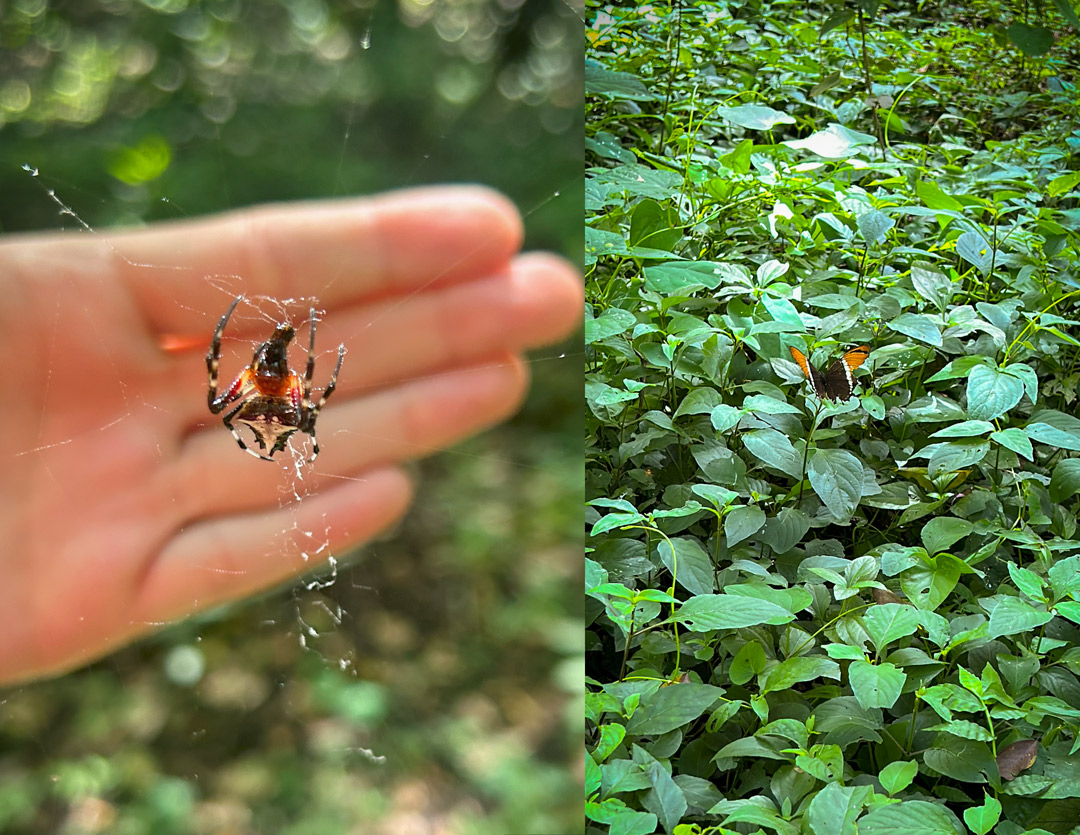
Arthropods found, and documented by students from Rafael Landivar University. Left, an arachnid. Right, one species of the family Lepidoptera. Naciones Unidas National Park; August 27, 2024. Photos by Mariana Rivas, and Diana Sandoval.
Objective
The workshop’s main goal was to teach the students about the importance of biodiversity, with a technical emphasis on field note taking. However, the activities were also designed to introduce the students to other field activities, and procedures that they may find helpful for their career. For instance, they were asked to implement many of the procedures that the FLAAR expedition team carries out on every documentation expedition, such as taking photos, doing plant, and animal species identification, as well as preparing reports. In parallel, they were encouraged to get to know the local diversity, as they were asked to identify the species of plants, mammals, and insects that they found in the Park.
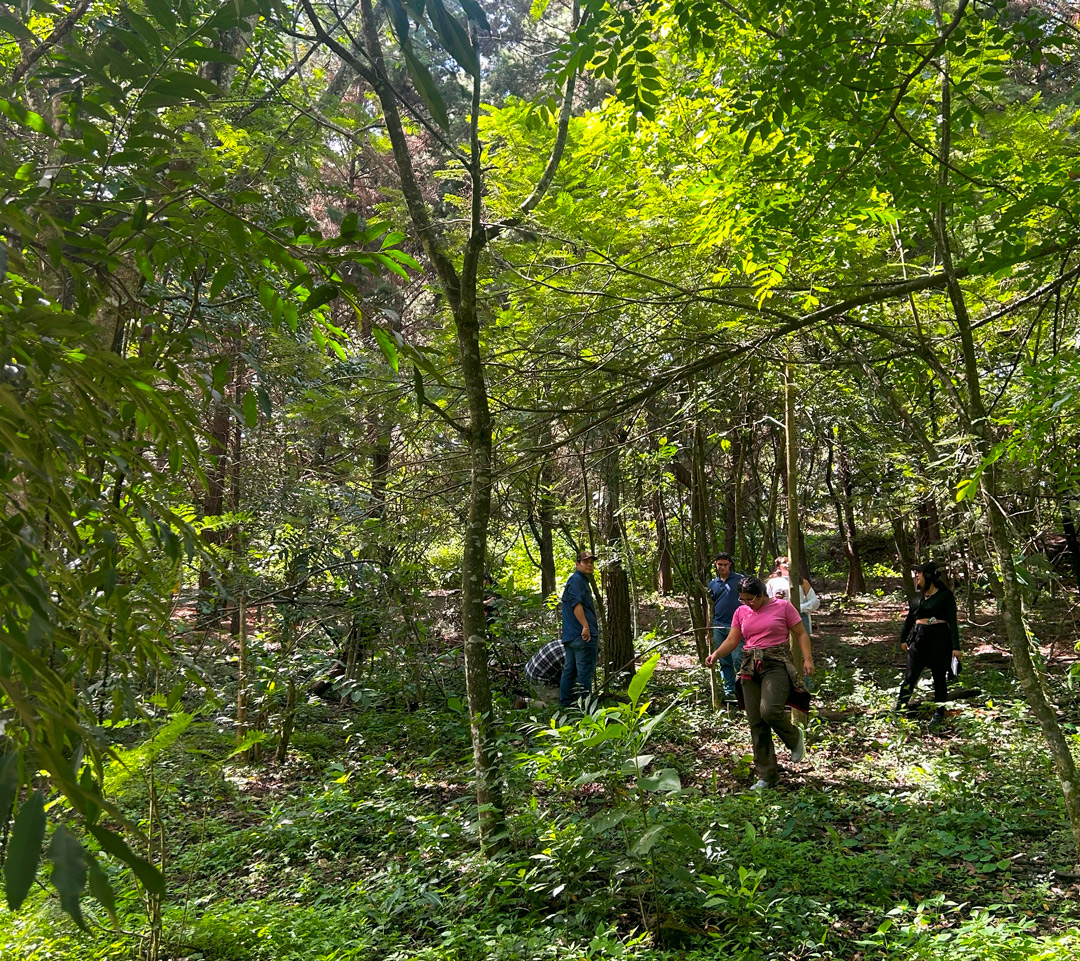
Here a group of students was recognizing their study area, and placing measuring tapes to later assess their assigned transect. Naciones Unidas National Park; August 27, 2024. Photo by Mariana Rivas.
Structure, and Theory
The workshop consisted of two parts. To begin with, researcher, and biologist Mariana Rivas Gálvez gave a lecture of approximately one hour, in which she covered the topic of biodiversity. Then, the students were shown some of the most common taxa that are found in the Naciones Unidas National Park, which was done with the intention of getting them familiarized with some of the species that they would probably find during the practical. The lecture ended with Mariana explaining the rest of indications for the workshop’s practice.
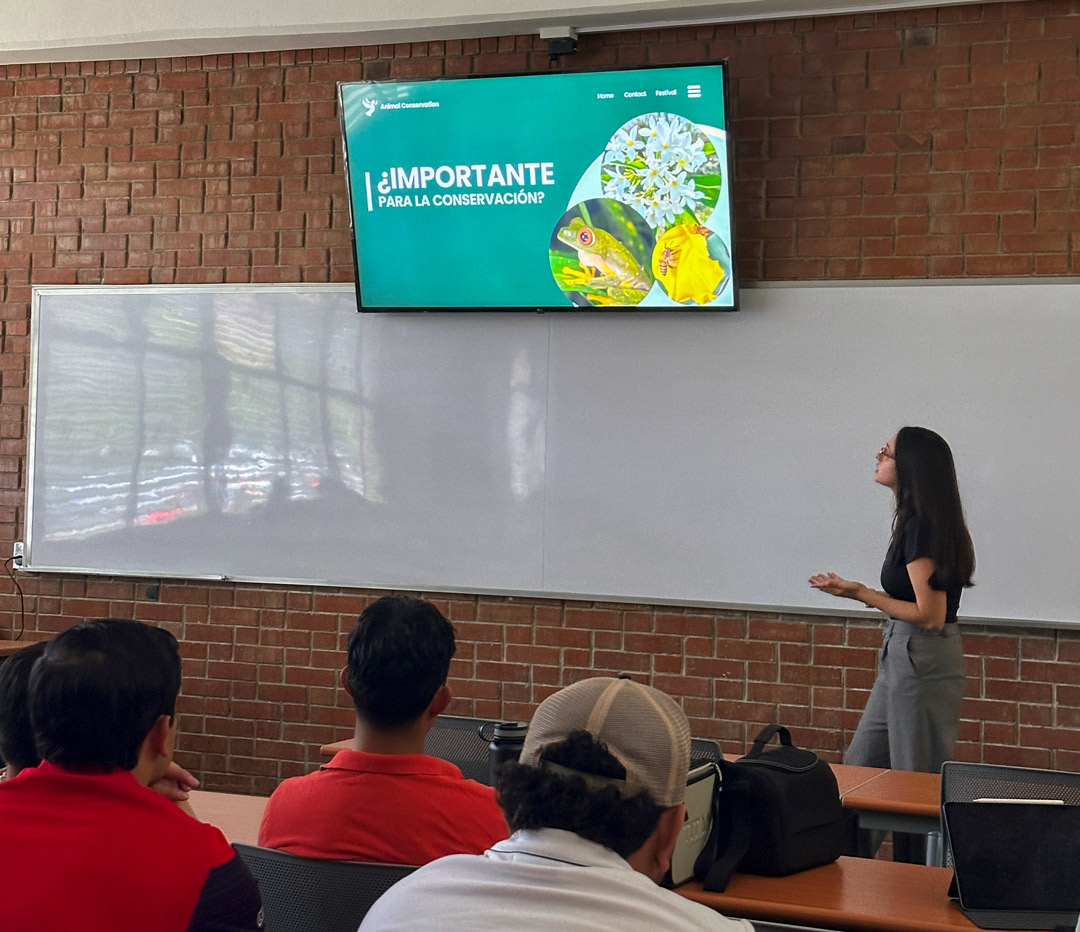
Researcher, and biologist Mariana Rivas in her lecture about Biodiversity. Rafael Landívar University; August 20, 2024. Photo by Victor Mendoza.
Fieldwork (practical)
For the practice, students were asked to do fieldwork in the Naciones Unidas National Park on August 27, where they got in a bus which was facilitated by the University. Once they were there, their assignment consisted of the following procedures.
First, each group was assigned a working area by the Park manager, as well as a supervisor from either the University’s staff, the Park’s personnel, or the FLAAR Research team. Immediately after, they were introduced to transect sampling, as they were asked to create 50×20 m transects, which they would use for their assessment. The methodology of transect sampling provides a standardized, and systematic method to collect data about the presence, abundance, and distribution of any species in a determined area. Therefore, it is a methodology that many researchers use on field assessments, and on this occasion, the methodology that the FLAAR Research team decided to use for this workshop.
Then, each group had to split in pairs, and each pair had to document different taxa. More particularly, each pair was assigned one of the following groups: arthropods, reptiles, and amphibians; birds, mammals, and plants. By doing so, students got the chance to mirror a rather common methodology that biologists, and other professionals of the environment apply during ecological assessments in which each participant focuses on a determined taxa.
Next, for the documentation process, each group was instructed to follow these steps. To start with, they took a panoramic with their smartphones of the area that enveloped their transect. This way, they could examine the general characteristics of the area in detail, and use this information to discuss their findings. Then, the pairs in each group looked for all the species from their assigned taxa that they could find in the transect.
During the whole process, the students were guided on how to take field notes, and they were asked to photograph all the species they found. More precisely, students were instructed on how to take good quality pictures that they could later use to identify each species. They were also taught to take notes of all the noticeable, and important characteristics observed in the wild specimens, as an exercise of an accurate documentation practice.
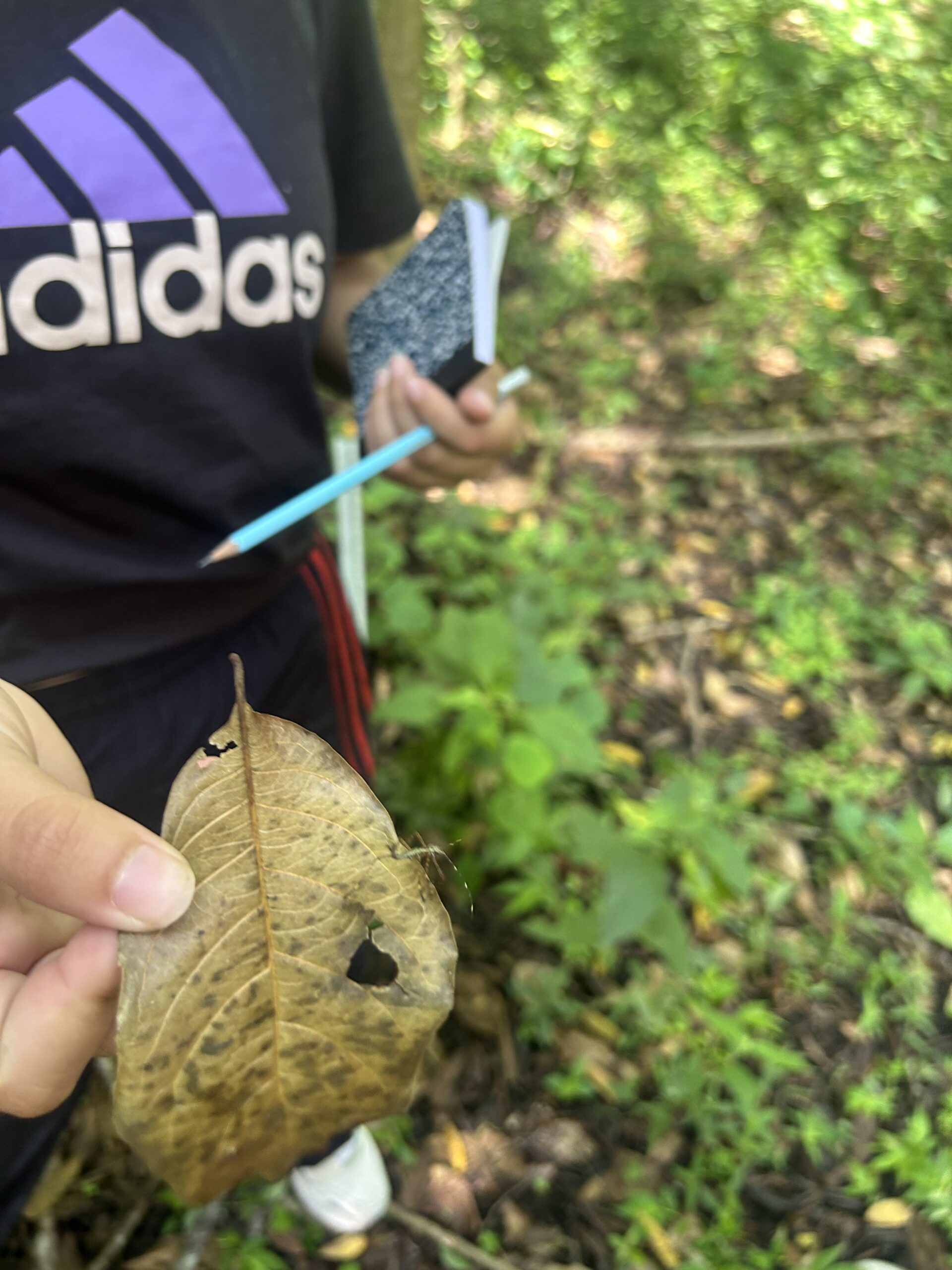
During the workshop, this insect was documented. Naciones Unidas National Park; August 27, 2024. Photo by biologist Mariana Rivas Gálvez
The workshop’s practice lasted three (3) hours (8:00 am – 11:00 am), where depending on the area, some groups of students found a higher number of insects, while others managed to spot some mammals, and reptiles (which some groups didn’t). Due to the time when the field work was done, some animals, such as amphibians, and birds, could not be observed. For instance, amphibians are mainly nocturnal, and birds are the most active in the early morning hours.
At the end, the students were gathered to discuss their results, and preliminary findings. This space was dedicated to solve their questions, and to help them reach consistent conclusions regarding what they had found, and why. This part was very important since valuable information was shared, which the students could use to draft their final reports. On that note, the last thing the students were asked, was to prepare a group report with all their findings using the same format that FLAAR Mesoamérica uses for its photo reports. Once the FLAAR Research team reviewed all the reports two weeks later, the best were selected to share them with the Park’s administration.
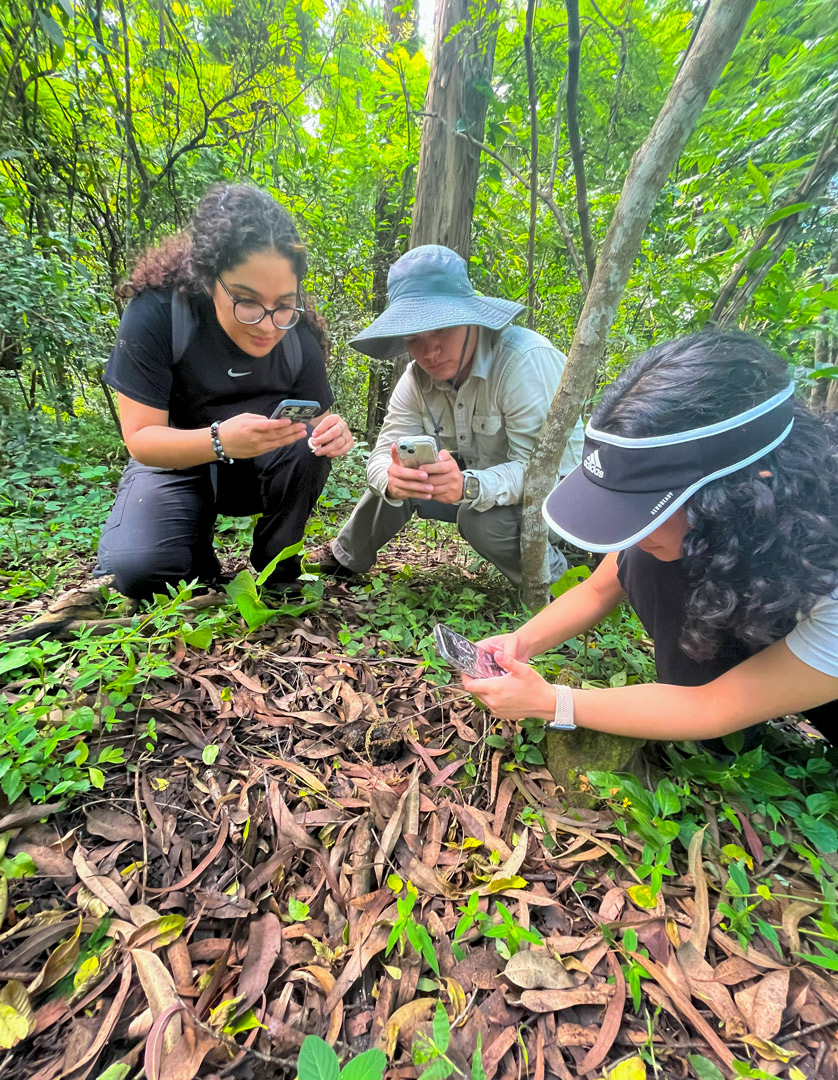
Group of ecology students their documentation process, using the transect methodology, and their smartphone cameras. Naciones Unidas National Park; August 27, 2024. Photo by Sergio D. Jerez.
This article ends with an appreciation note to professor Daniela Sandi, and the Rafael Landívar University’s Faculty of Environmental, and Agricultural Sciences, who have allowed FLAAR’s team to engage with their students. The participation of biologist Andrid Ramírez, the Park’s rangers, and other staff from the Foundation Defensores de la Naturaleza, which is currently in charge of the Park’s administration is also deeply appreciated.
We continue to encourage students to look through the materials we publish, so that they can select research topics for their undergraduate thesis, and continue exploring the potential that many wild species hold for the sustainable development of Guatemala, and the region.
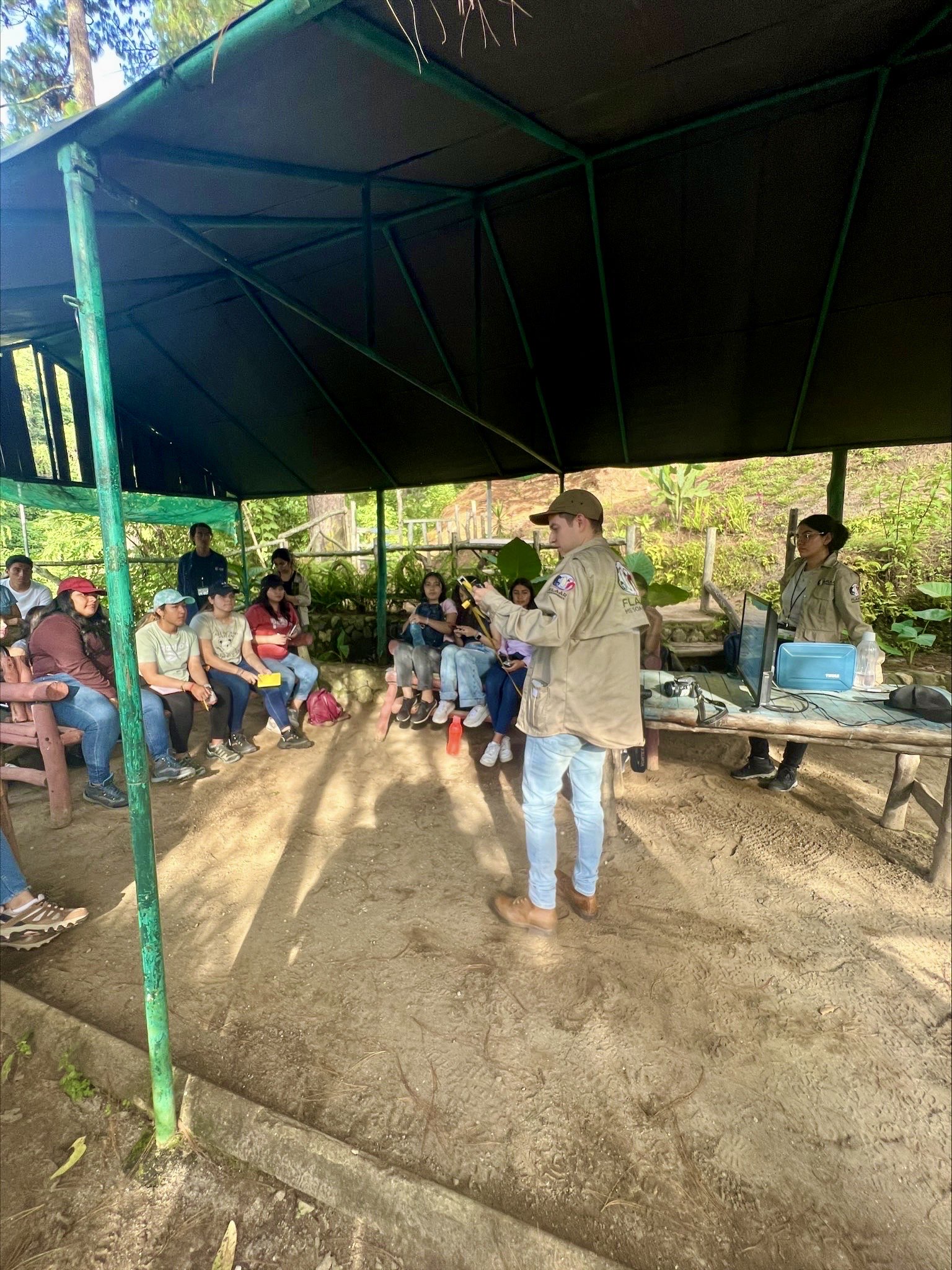
This is a picture from last year’s biodiversity workshop, which was held in Kanajuyú Park. Here, FLAAR Mesoamérica’s Research team director, Victor Mendoza, was giving a part of the lecture. Photo shared by Daniela Sandi.
Written by researchers Mariana Rivas Gálvez, Sergio D’angelo Jerez, and FLAAR’s Research Director Victor Mendoza.
Edited by Sergio D’angelo Jerez, and Mariana Rivas Gálvez.

